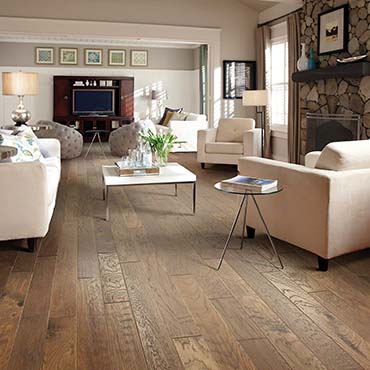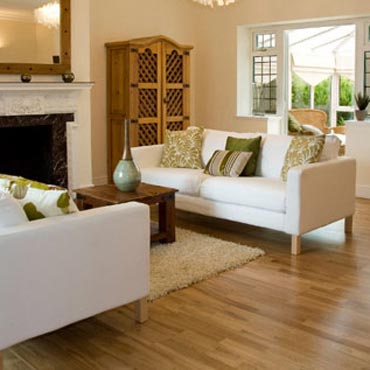Wood Flooring: Corners/Inlays
The Art of Wood Corners and Inlays in Modern Interior Design
In the ever-evolving world of interior design, the devil is indeed in the details. Among these, wood corners and inlays stand out for their ability to infuse spaces with character, warmth, and elegance. This article delves into the significance of these elements in modern interior design, exploring their types, versatility, durability, and sustainability, and how they enhance interior spaces. It also offers insights and tips for interior designers, decorators, and design consultants on selecting the ideal wood corners and inlays for various projects.
Types of Wood Corners and Inlays
Wood corners and inlays come in various forms and designs, each with its unique charm. The most common types include:
- Geometric Inlays: Perfect for contemporary settings, these involve simple shapes like squares, rectangles, and triangles.
- Floral and Organic Patterns: Ideal for classic and vintage interiors, these inlays often feature intricate flower and leaf designs.
- Marquetry: This involves piecing together veneers of different colors and grains to create complex images or patterns.
- Parquetry: Similar to marquetry but primarily focuses on geometric patterns, often used in flooring.
- Custom Designs: Tailored to the client’s preference, ranging from minimalistic to elaborate artworks.
Versatility and Durability
Wood corners and inlays offer unparalleled versatility, allowing them to be integrated into various design styles, from rustic to modern minimalist. They can be used in flooring, furniture, doors, and even walls, providing a sense of continuity and flow in the design narrative.
As for durability, hardwoods like oak, maple, and walnut are commonly used for their longevity and resistance to wear. Properly installed and maintained wood inlays can last for decades, making them a sustainable choice for long-term design projects.
Sustainability
Sustainability in interior design has gained significant importance, and wood corners and inlays align well with this trend. Choosing FSC-certified wood, which ensures responsible forestry, or reclaimed wood can contribute to a project’s eco-friendliness. Additionally, wood is a natural, renewable resource, and using it can reduce the carbon footprint of an interior design project.
Enhancing Interior Spaces
Wood corners and inlays can transform an ordinary space into something extraordinary. They add a layer of sophistication and can be a focal point in a room. Inlays on floors can define spaces without erecting barriers, ideal for open-plan homes. Similarly, wood corners can soften the transition between different materials or colors, adding a seamless elegance to the room.
Insights for Professionals
For interior designers and consultants, here are some tips for selecting and using wood corners and inlays:
- Understand the Space: Consider the overall style of the room. A modern space may benefit from geometric patterns, while a traditional setting might call for more ornate designs.
- Quality Matters: Invest in high-quality wood and craftsmanship. This ensures the longevity and aesthetic appeal of the inlays and corners.
- Color Coordination: Ensure the wood’s color complements the room’s color palette. Contrasting woods can create dramatic effects, while similar tones offer a subtle elegance.
- Scale and Proportion: The scale of the patterns should harmonize with the room's size. Large patterns can overwhelm a small room, while intricate designs might get lost in a large space.
- Budgeting: Inlays can be expensive. Balance the project budget by using inlays strategically, perhaps in smaller areas or as accent pieces.
Recent Trends and Innovative Materials
Recent trends in wood corners and inlays include:
- Mixed Materials: Combining wood with other materials like metal, stone, or glass for a contemporary look.
- Eco-friendly Options: Using reclaimed wood or sustainable sources for inlays.
- Digital Patterns: Incorporating modern, digital-inspired designs into traditional wood inlays.
- Bold Geometrics: Large, bold geometric patterns are increasingly popular in modern interiors.
Innovative materials like engineered wood and composites are also being used. These materials offer more uniformity and can be more sustainable, as they often use smaller pieces of wood or wood waste.
Conclusion
Wood corners and inlays are more than just decorative elements; they are expressions of craftsmanship and design acumen. In modern interior design, they offer a bridge between tradition and innovation, infusing spaces with personality and style. By carefully selecting and integrating these elements, design professionals can significantly elevate the aesthetic and functional value of their projects, ensuring both timeless beauty and sustainability.
Brand Overview


Shaw Hardwoods Flooring
Profile | Website | Warranty | Clean | Maintain | Green
Shaw Hardwood Flooring offers consumers the timeless tradition of hardwood flooring with a wide variety of species, colors, and sizes. Shaw hardwood flooring brings Beauty and Strength to Any Room. See our Collection of Wood Flooring Stains and Grains.


Anderson-Tuftex Hardwood
Profile | Website
Real wood floors made of Maple, Oak, Beech, Elm, and Pecan should be as familiar to you as the countless city streets that are named after these trees. Their rich natural colors and hand-crafted quality is what we have come to expect in our homes. Now, Anderson has taken wood flooring technology to a place it has never gone before—with Best-in-Class durability.

















